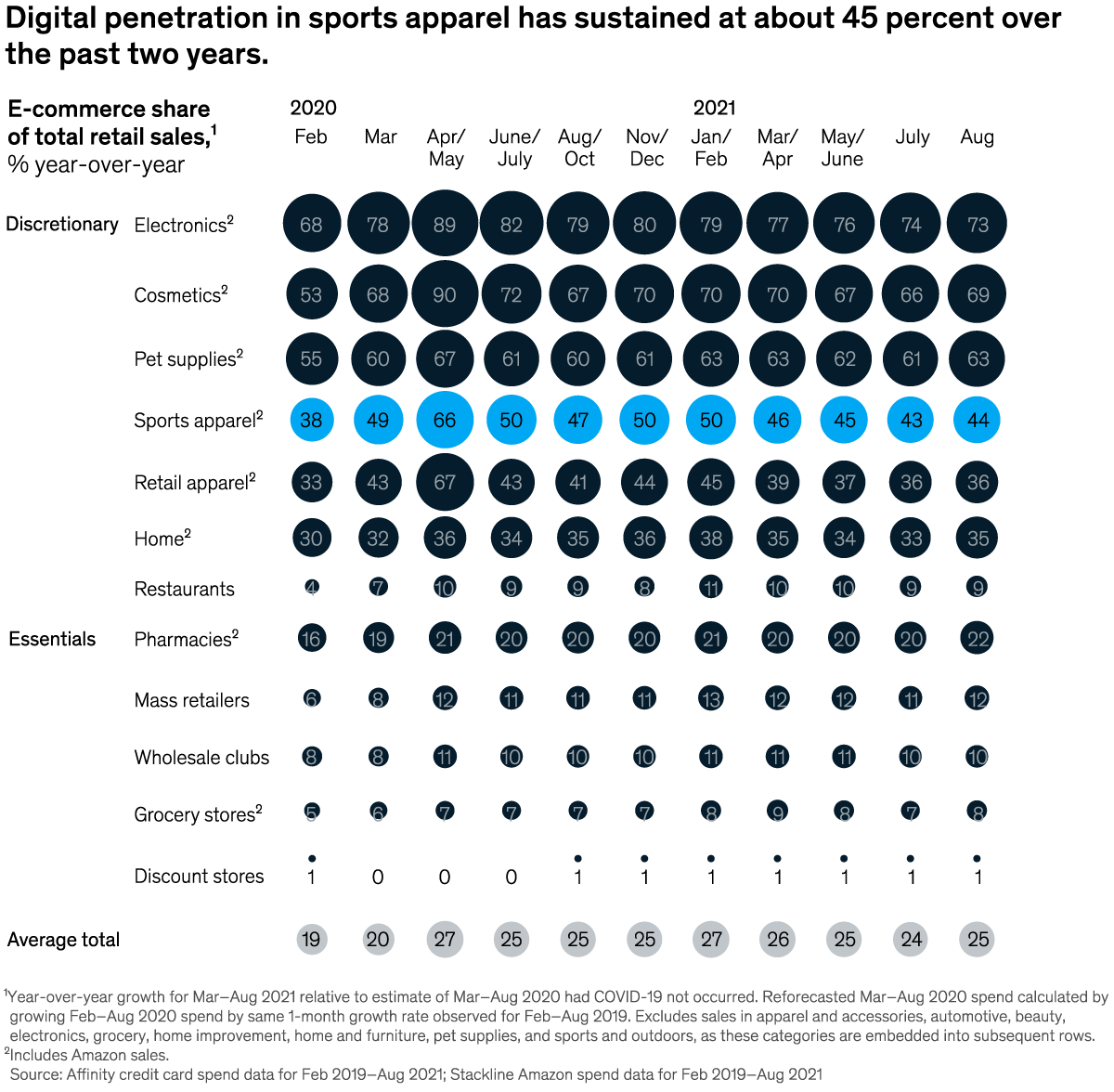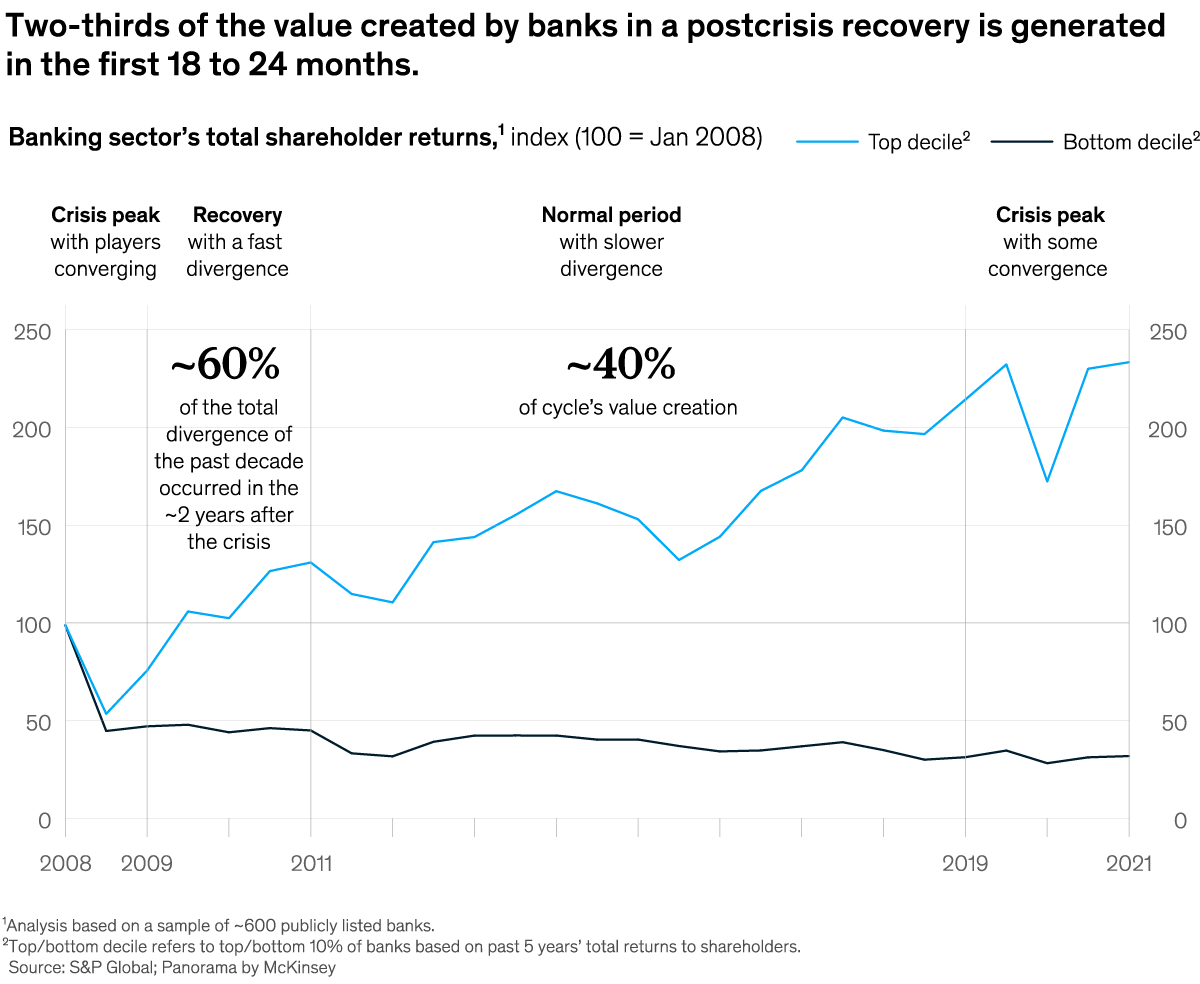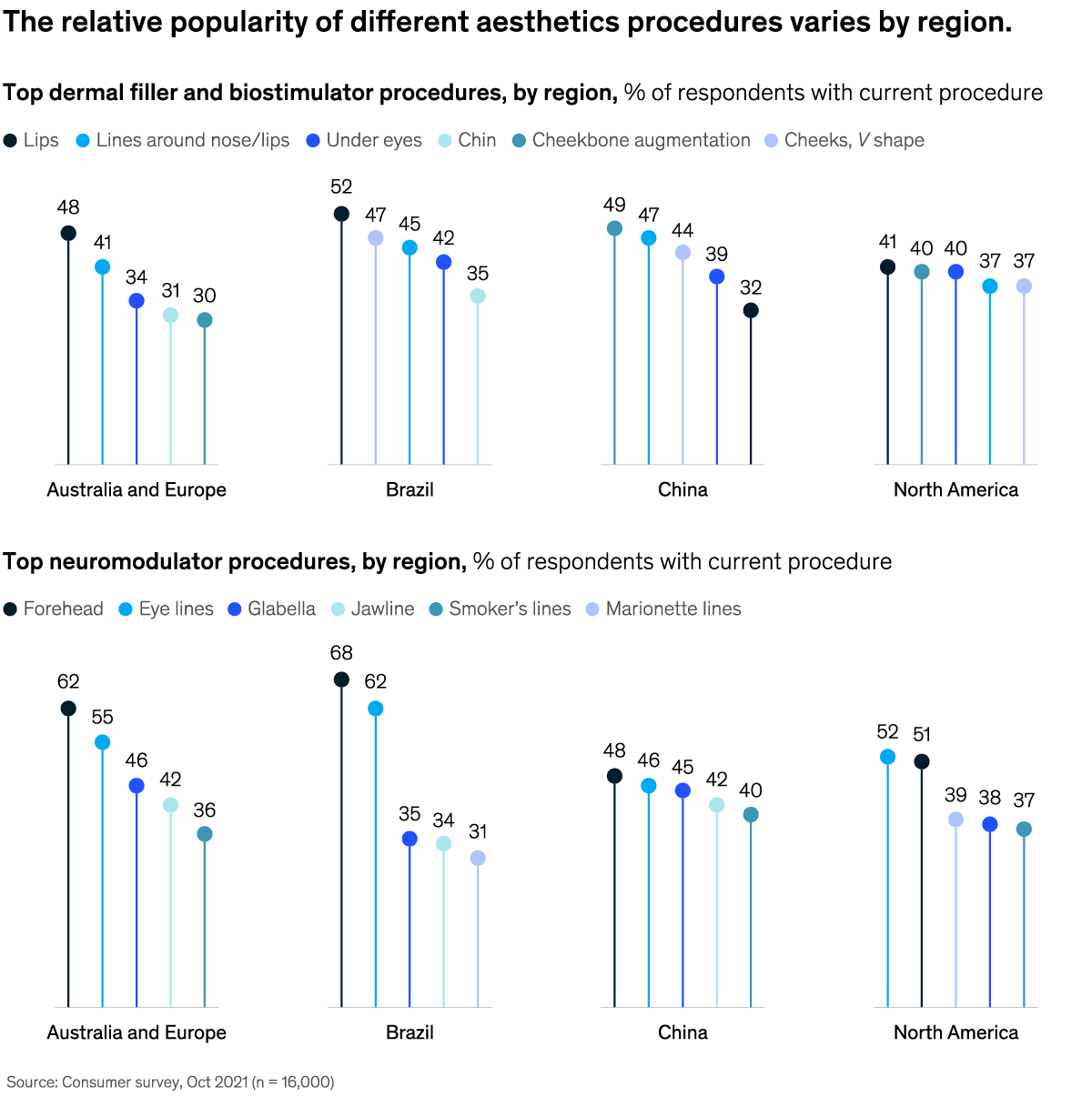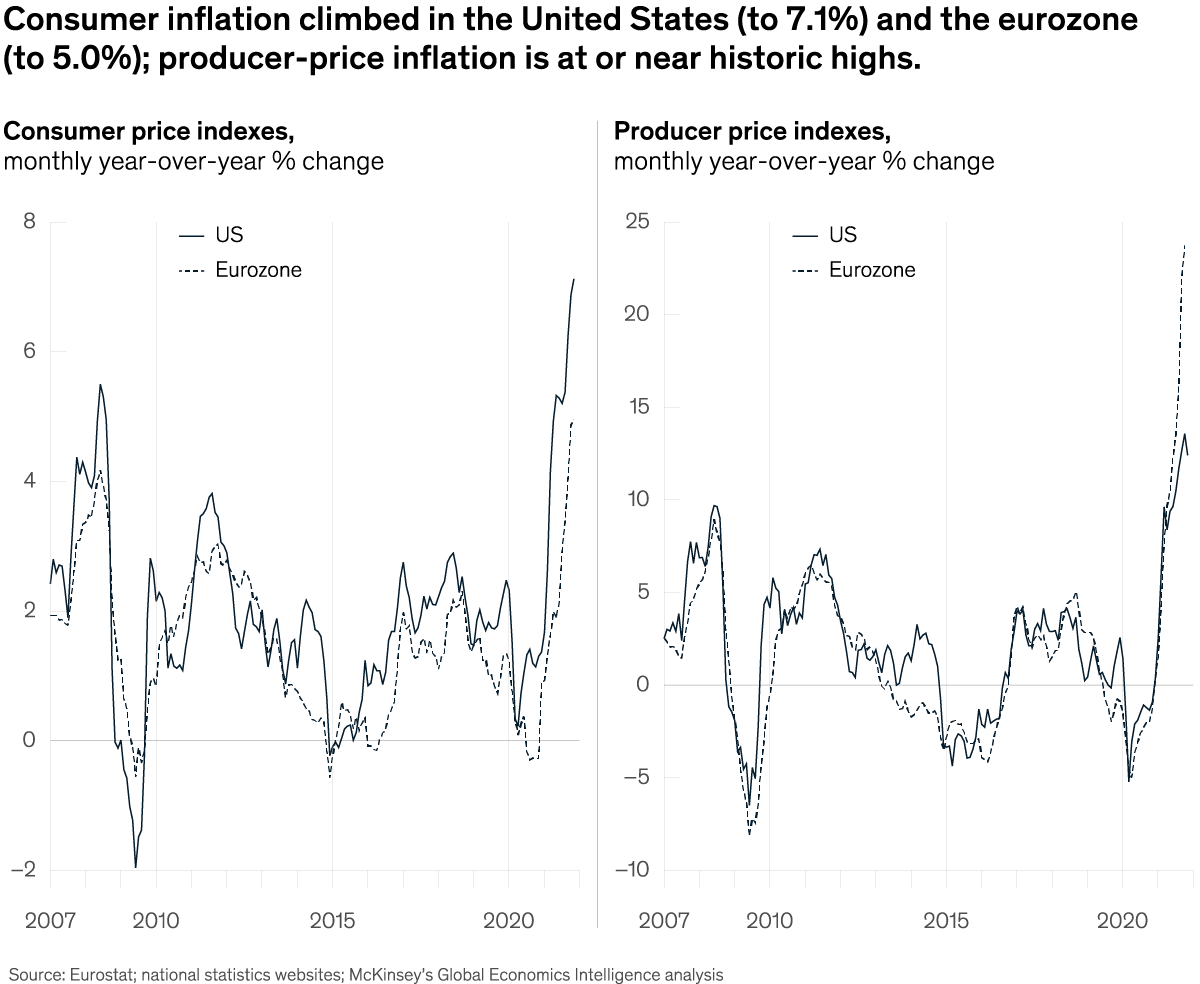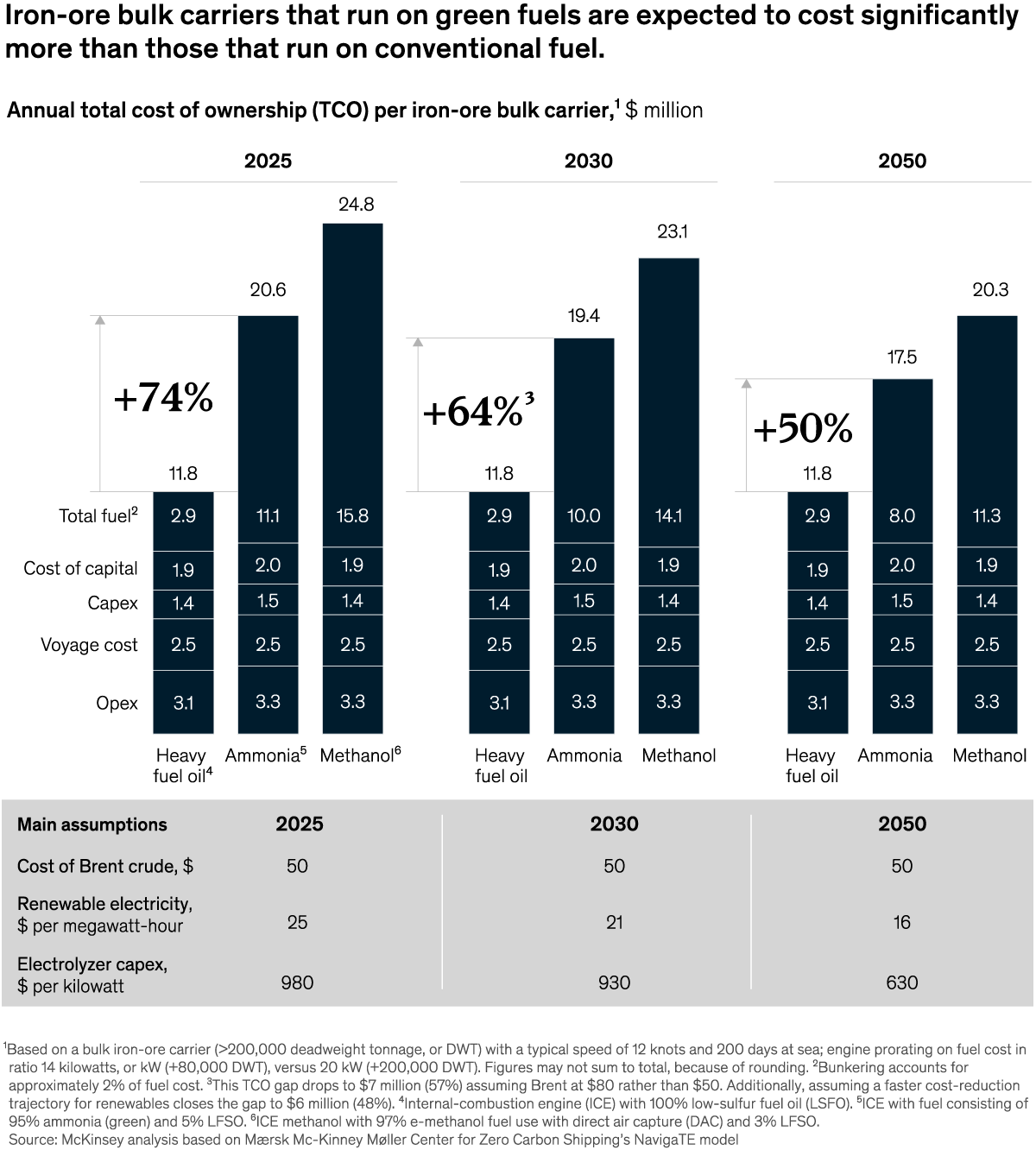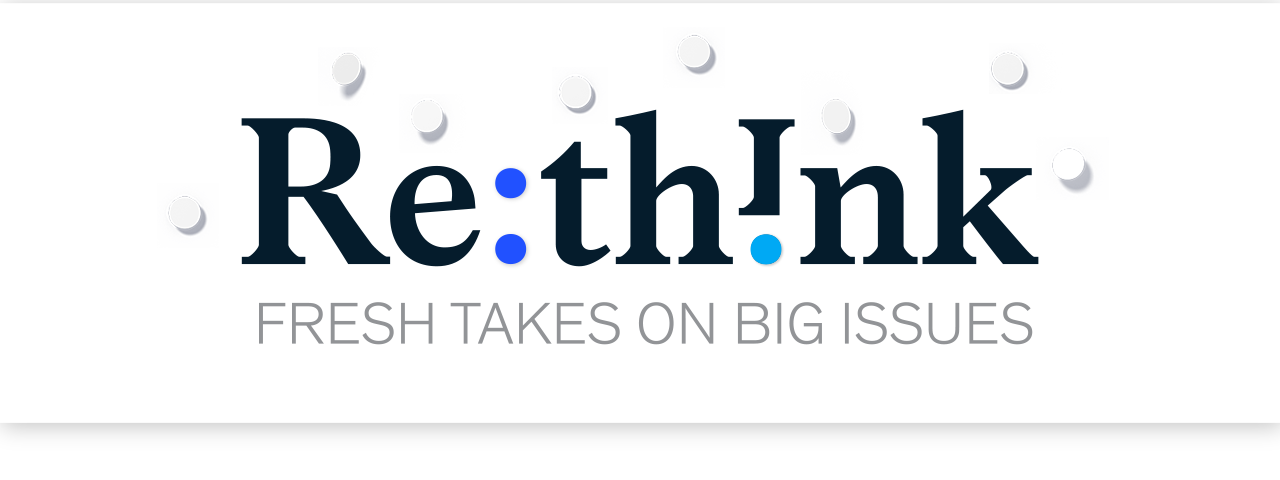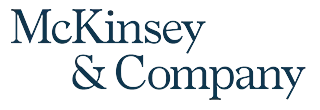Archives
- By thread 5224
-
By date
- June 2021 10
- July 2021 6
- August 2021 20
- September 2021 21
- October 2021 48
- November 2021 40
- December 2021 23
- January 2022 46
- February 2022 80
- March 2022 109
- April 2022 100
- May 2022 97
- June 2022 105
- July 2022 82
- August 2022 95
- September 2022 103
- October 2022 117
- November 2022 115
- December 2022 102
- January 2023 88
- February 2023 90
- March 2023 116
- April 2023 97
- May 2023 159
- June 2023 145
- July 2023 120
- August 2023 90
- September 2023 102
- October 2023 106
- November 2023 100
- December 2023 74
- January 2024 75
- February 2024 75
- March 2024 78
- April 2024 74
- May 2024 108
- June 2024 98
- July 2024 116
- August 2024 134
- September 2024 130
- October 2024 141
- November 2024 171
- December 2024 115
- January 2025 216
- February 2025 140
- March 2025 220
- April 2025 233
- May 2025 239
- June 2025 303
- July 2025 36
-
Robots in warehouses are picking and packing at top speeds
McKinsey&Company
Here come the robots .

Our robot helpers The news • Better bots. Boxes piling up at front doors in neighborhoods all over the world illustrate a surge in home deliveries during the COVID-19 pandemic. To keep parcels moving amid a tight labor market and supply chain crunch, warehouses need more robots—and more cutting-edge, efficient ones, too. The prototype of one such bot looks like a cube on wheels. The robot’s 3-D-printed parts make it much lighter than previous versions, and it can pick 50 items stored in different parts of a warehouse in under five minutes. [Economist] • Powered by AI. Due to advances in technology, robotic arms powered by machine learning and AI are increasingly able to handle warehouse tasks typically performed by people, such as sorting apparel and packing supplies. At one sportswear company, robotic arms equipped with cameras and grippers use AI to pick out objects from bins. The robotic arms perform about as accurately as humans but can work for a double shift without resting, said one senior supply chain leader. [WSJ] 
Leading retailers are aiming to make warehouses responsive, resilient, and reliable to accommodate the ever-growing e-commerce market. 
Our insights • These bots aren’t made for walking. For retailers, warehouse automation is no longer just nice to have; it’s a must-have for sustainable growth. Large and small companies alike are developing and using new technologies to increase productivity and speed of delivery. Autonomous mobile robots, for example, retrieve and transport items quickly and efficiently, eliminating a significant amount of walking time. One German toy retailer built a warehouse that includes 57 robots that retrieve 3,500 different products from more than 28,000 bins. • Billions invested. The warehouse-automation market is expected to reach $51 billion by 2030, with venture-capital funding and private equity fueling a wave of innovation. More than 80% of retailers in apparel, grocery, and other key sectors said that they would increase automation investments over the next two to three years, a recent McKinsey survey revealed. Read about three warehouse archetypes and the automation systems that work best for each—and get a vision of the warehouse of the future. — Edited by Belinda Yu What’s next for warehouses 
Was this forwarded to you? Sign up here. Or send us feedback — we’d love to hear from you. 

Follow our thinking 


This email contains information about McKinsey’s research, insights, services, or events. By opening our emails or clicking on links, you agree to our use of cookies and web tracking technology. For more information on how we use and protect your information, please review our privacy policy. You received this email because you subscribed to the On Point newsletter. Manage subscriptions | Unsubscribe Copyright © 2022 | McKinsey & Company, 3 World Trade Center, 175 Greenwich Street, New York, NY 10007
by "McKinsey On Point" <publishing@email.mckinsey.com> - 12:43 - 16 Feb 2022 -
Invitation to Intel's Built for Wonderful Event
Invitation to Intel's Built for Wonderful Event

Intel invites you to our Built for Wonderful Event.
Discover how Intel technology and our broad ecosystem are powering the transformation to software-defined everything.
Join us for Intel’s Built for Wonderful virtual event on Friday, February 25th. Hosted by Nick McKeown, Senior Vice President, Senior Fellow and General Manager of the Network and Edge Group, the event will reveal new products and feature other industry leaders on their latest successes with Intel.
Kick-off this year’s Mobile World Congress with Intel and hear about the latest developments in 5G and the intelligent edge:
Friday, February 25th, 2022
12:00 AM SGT
Learn more hereWe look forward to you attending our virtual Built for Wonderful event!
This was sent to info@learn.odoo.com because you are subscribed to Events & Tradeshows. To view and manage your marketing-related email preferences with Intel, please click here.
© 2022 Intel Corporation
Intel Corporation, 2200 Mission College Blvd., M/S RNB4-145, Santa Clara, CA 95054 USA. www.intel.comPrivacy | Cookies | *Trademarks | Unsubscribe | Manage Preferences
by "Intel Corporation" <intel@plan.intel.com> - 09:06 - 15 Feb 2022 -
Creating value, finding focus: Global insurance report 2022
the Daily read
Read the full report .
Share this email 



AN ARTICLE A DAY, PICKED BY OUR EDITORS 
The insurance industry, like so many others, was roiled by the pandemic’s many effects. Indeed, premium growth slowed and profits fell in 2020. Preliminary data suggests both rebounded in 2021—but the industry still faces considerable challenges, including revenue growth headwinds, the ongoing “fight for the customer,” and limited productivity improvements. So how can insurers meet this unique moment and restart value creation? The Global Insurance Report, free to download and read in full, outlines the state of the industry and highlights nine value levers that could help carriers define both where and how to play. Don’t miss it. — Emily Adeyanju, digital editor, New York 
Creating value, finding focus: Global Insurance Report 2022 The insurance industry struggles to create economic profit. But amid COVID-19’s enduring changes, opportunities await. Read the full report 

Quote of the Day “Leading companies take a holistic perspective on sustainability, examining the way products are transported, packaged, handled, and used—and what happens to them at end of life.” —Learn about opportunities to improve sustainability in “Product sustainability: Back to the drawing board” 
Chart of the Day See today’s chart 
Also New 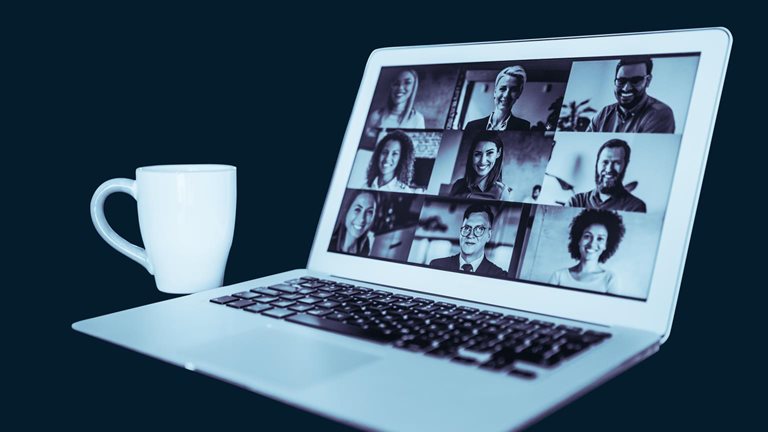

Back and forth: COVID-19’s impact on business in 2021—and today The years-long pandemic persists. How can companies continue to adapt? Think ahead 


Logistics disruptors: A shared digital platform for US–Mexico logistics The inaugural installment of the Logistics Disruptors series spotlights Nuvocargo founder Deepak Chhugani, whose digital platform syncs up the disparate fragments of the US–Mexico trade route. Check out our newest series 


To improve your supply chain, modernize your supply-chain IT Global distribution issues and increasingly complex supply chains are forcing companies to modernize the tools they use for forecasting demand and planning how to meet it. Get with the times 


Follow our thinking 



Share these insights Did you enjoy this newsletter? Forward it to colleagues and friends so they can subscribe too.
Was this issue forwarded to you? Sign up for it and sample our 40+ other free email subscriptions here.This email contains information about McKinsey’s research, insights, services, or events. By opening our emails or clicking on links, you agree to our use of cookies and web tracking technology. For more information on how we use and protect your information, please review our privacy policy. You received this email because you subscribed to the Daily Read newsletter. Manage subscriptions | Unsubscribe Copyright © 2022 | McKinsey & Company, 3 World Trade Center, 175 Greenwich Street, New York, NY 10007
by "McKinsey Daily Read" <publishing@email.mckinsey.com> - 06:31 - 15 Feb 2022 -
Setting Standards in API Design| The SmartBear Designer Series
Join us on Feb. 22nd to learn about API documentation & standardization!Hey Abul,
Hope to see you there,
On February 22nd, we are hosting our next installment of "The Designer Series", our monthly tutorial to highlight a specific SwaggerHub use case. For this upcoming session, we are focusing on setting standards within API Design.
SwaggerHub eliminates the overwhelmingness of ensuring all APIs meet your organization's design criteria by enforcing customized guidelines for all designers.
To join us for this session, you can register here: "The Designer Series: Setting Standards in API Design"
Andrew Marotta,
Growth Marketing Manager at SmartBear
P.S. We'll be sending a recording after the webinar in case you cannot attend.
This email was sent to info@learn.odoo.com by SmartBear Software, 450 Artisan Way, Somerville, MA. 02145, 617.684.2600, www.smartbear.com. We hope you found this email of interest. However, we value your privacy. Please click here to Unsubscribe or manage mail preferences. Privacy Policy.
by "Andrew from SmartBear" <swaggerhub-team@smartbearmail.com> - 10:58 - 15 Feb 2022 -
From lockdowns to life with COVID-19: Managing endemic disease
McKinsey&Company
Four elements to watch .

Living with COVID-19 The news • Relaxed restrictions. Governments in Europe, North America, and Asia are reluctant to impose lockdowns on a weary public and are therefore tolerating higher numbers of COVID-19 cases. With Omicron spreading more quickly than previous variants but causing milder symptoms among the vaccinated, more countries are abandoning restrictive measures put in place to control the pandemic. Health officials are forgoing contact tracing, reducing isolation times, and allowing large crowds to gather, paving the way to a future when COVID-19 is treated like an everyday illness. [WSJ] • A startling statistic. More than 50% of Europeans will catch the Omicron variant by March if infections keep climbing at their current rate, according to the World Health Organization. Countries in Europe are beginning to consider managing COVID-19 like an endemic disease, similar to the flu. Even as some European countries are seeing record levels of infection, hospitalization and fatality rates are lower. Public officials are focusing on keeping schools and economies functioning even as COVID-19 cases continue to grow. [Bloomberg] 
Soon, the daily risks we run with COVID-19 may seem as much a part of normal daily life as the risks we run when we put the car in drive or navigate flu season each winter. 
Our insights • Why it matters. Few locations are likely to achieve herd immunity against COVID-19. This is due to the highly transmissible nature of the most recent variants including Omicron, continuing vaccine hesitancy, and current public-health measures providing incomplete protection against transmission. Most societies, including the United Kingdom, the United States, and much of Europe, will need to learn to live with COVID-19, at least over the medium term. • Realistic goals. Societies will need to set goals for what the new normal will look like. Defining that in a world where, for two years now, societies focused on daily cases and test positivity is a change that will need to be carefully communicated. It will also mean that stakeholders—including governments, employers, health systems, and individuals—will each have important roles to play as we work together to reclaim our lives. Learn more about the four elements needed to manage endemic COVID-19. — Edited by Katherine Tam Manage the virus 
Was this forwarded to you? Sign up here. Or send us feedback — we’d love to hear from you. 

Follow our thinking 


This email contains information about McKinsey’s research, insights, services, or events. By opening our emails or clicking on links, you agree to our use of cookies and web tracking technology. For more information on how we use and protect your information, please review our privacy policy. You received this email because you subscribed to the On Point newsletter. Manage subscriptions | Unsubscribe Copyright © 2022 | McKinsey & Company, 3 World Trade Center, 175 Greenwich Street, New York, NY 10007
by "McKinsey On Point" <publishing@email.mckinsey.com> - 12:43 - 15 Feb 2022 -
New variant, new challenges: How are we coping with Omicron?
the Daily read
Adapt to change .
Share this email 



AN ARTICLE A DAY, PICKED BY OUR EDITORS 
The consensus is that COVID-19 will become endemic from the pandemic. But Omicron's rapid rise certainly complicated matters. So how are people and companies coping? The latest episode of The McKinsey Podcast dives deeper on the new challenges of this newer variant, including the way it's affecting education, hospitals, the supply chain, testing and masking, and more. Check out the conversation—and listen to the end for the second segment, featuring the Nature Conservancy's chief scientist on climate change. — Torea Frey, managing editor, Seattle 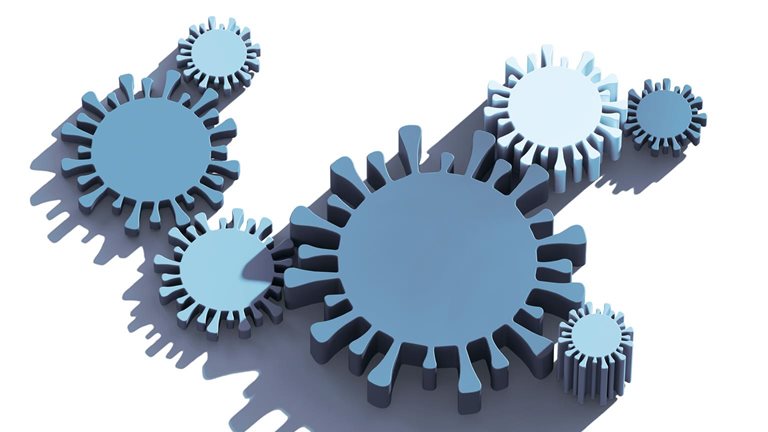
New variant, new challenges: How are we coping with Omicron? The Omicron variant continues to disrupt the healthcare system, schools, and work. How can business continue to adapt? Adapt to change 

Quote of the Day —Find out why the inclusive consumer is a force to be reckoned with in “The rise of the inclusive consumer” 
Chart of the Day See today’s chart 
Also New 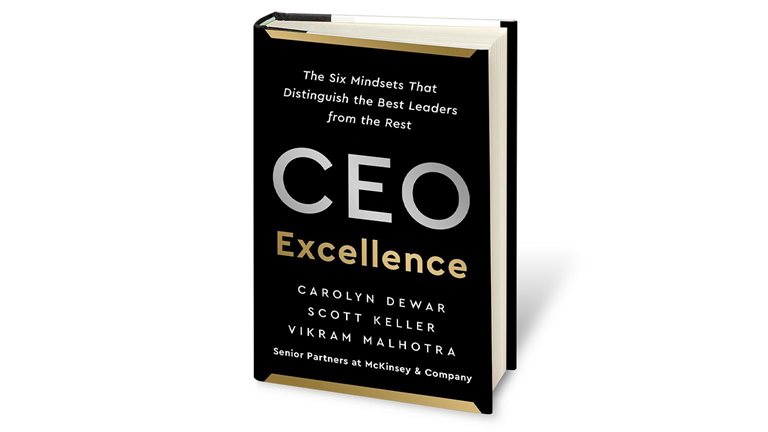

How to be an excellent CEO: Part 3 See what the authors of the #CEOExcellenceBook have to say about how the best CEOs lead through leaders in this third video of a seven-part series. Watch the video 


Ransomware prevention: How organizations can fight back Ransomware has rapidly become one of the top cybersecurity nightmares. Strategies for prevention, preparation, response, and recovery can help. Secure your work environment 


Lockheed Martin’s Joe Landon on the emerging space economy We may be approaching an age in which companies conduct business in orbit or on the moon, says Lockheed Martin executive Joe Landon. Move towards the cosmos 


Follow our thinking 



Share these insights Did you enjoy this newsletter? Forward it to colleagues and friends so they can subscribe too.
Was this issue forwarded to you? Sign up for it and sample our 40+ other free email subscriptions here.This email contains information about McKinsey’s research, insights, services, or events. By opening our emails or clicking on links, you agree to our use of cookies and web tracking technology. For more information on how we use and protect your information, please review our privacy policy. You received this email because you subscribed to the Daily Read newsletter. Manage subscriptions | Unsubscribe Copyright © 2022 | McKinsey & Company, 3 World Trade Center, 175 Greenwich Street, New York, NY 10007
by "McKinsey Daily Read" <publishing@email.mckinsey.com> - 06:34 - 14 Feb 2022 -
A leader’s guide to the Davos Agenda
Leading Off
#DavosAgenda deep dive .
Share this email 



ESSENTIALS FOR LEADERS AND THOSE THEY LEAD 
Maybe you didn’t receive an invitation to attend the World Economic Forum’s annual Davos meeting this year. Lucky for you, the WEF also put together a virtual Davos Agenda leadership docket. Topics include the COVID-19 pandemic and economic recovery, the energy transition, vaccine equity and a renewed social contract, supply chain disruptions, the Fourth Industrial Revolution, and even outer space. This week, let us help you sort out the ones that are most likely to be top of mind as the year unfolds. AN IDEA 
The global economic balance sheet needs rebalancing What does the state of the global economy over the past 20 years tell us? A recent McKinsey Global Institute report applies the concept of the corporate balance sheet to the global economy. The findings reveal that net worth across countries and households has tripled since 2000—now reaching more than $500 trillion—but varies widely by economy and within economies. Shifting sources of wealth are weakening the link between growing net worth and GDP: for every new dollar of investment, the financial system has created $4 in liabilities, and more investment is going into real estate than into infrastructure, intangible assets, and other drivers of economic growth. The key questions for leaders: How can global wealth and investment be used more productively and sustainably? What level of risk have we created with our assets, and how can we support it? Public- and private-sector decision makers will need to work together to address these complex issues, and both will play a key role in rebalancing the global economy. 
A BIG NUMBER $9.2 trillion That’s the annual average spending on physical assets—such as energy, mobility, buildings, agriculture, and land use—needed to achieve net-zero emissions by 2050, according to a new report from McKinsey. Spending over the next decade will prove decisive in how the energy transition and the global economic transformation required to achieve climate change goals will affect reductions in physical climate risks and other outcomes. Check out this series of articles to explore the seven key energy and land-use systems, how different sectors and geographies may be affected by the net-zero transition, and actions stakeholders can take to secure a more orderly transition. 

A QUOTE “Rather than just living on a changing planet, we can help it thrive. We can become planetary stewards. If we collaborate and put our minds together, we can do the extraordinary.” That’s Robbie Schingler, cofounder of Planet Labs. There are more than 4,500 active satellites flying around in space, a number that is projected to grow exponentially in the coming years. In this interview, Schingler describes the satellite-data company as an agent for “democratizing access to information,” utilizing its more than 1,500 satellite images of Earth to transform the way people work across industries, ranging from agriculture to academia. Data from space can also help leaders take preventive measures against global risks. “Satellites that take the pulse of the planet will be used for applications that help people on Earth make sense of things,” Schingler says, “so that we’re not surprised, we understand risk, and we get closer to a true-cost global economy.” 
A SPOTLIGHT INTERVIEW 
The Great Resignation has posed a challenge for leaders in recent months, leaving some wondering what steps to take in response, but research provides some clarity, pointing to the changes employees desire, including professional-development opportunities like upskilling and training. In this episode of the McKinsey Talks Operations podcast, panelists from manufacturing organizations discuss the impact of technology and the Fourth Industrial Revolution on the sector and how they’re keeping their workforces engaged for the digital future by remaining people-centered. McKinsey research shows that revitalizing the US manufacturing industry could not only help address ongoing supply chain issues in response to the pandemic but also expand inclusive employment in some areas. 
THE TIMES THEY ARE A-CHANGIN’ 
As the world transforms drastically in the face of digital and technological revolutions, emergence from a pandemic, and shifting societal and stakeholder expectations, complex issues can be successfully addressed only through global collaboration. The Davos Agenda, of course, is about big ideas. And more than that, it’s about dialogue among experts. In this podcast from the McKinsey Global Institute, leading economists Dame Minouche Shafik and Andrew Sheng take up perhaps one of the biggest subjects on any leader’s agenda: the global social contract. What’s the contract today between the individual, the social-media giants, and the state, and how has it changed over time? Who rules, and who bears the highest-risk burdens? And what is the connection between sustainability and intergenerational equity? Put aside thoughts of alpine skiing and listen in—you might just imagine yourself in a Davos salon. Lead collaboratively. — Edited by Dana Sand, an editorial production manager in McKinsey’s Cleveland office 

Follow our thinking 



Share these insights Did you enjoy this newsletter? Forward it to colleagues and friends so they can subscribe too.
Was this issue forwarded to you? Sign up for it and sample our 40+ other free email subscriptions here.This email contains information about McKinsey’s research, insights, services, or events. By opening our emails or clicking on links, you agree to our use of cookies and web tracking technology. For more information on how we use and protect your information, please review our privacy policy. You received this email because you subscribed to the Leading Off newsletter. Manage subscriptions | Unsubscribe Copyright © 2022 | McKinsey & Company, 3 World Trade Center, 175 Greenwich Street, New York, NY 10007
by "McKinsey Leading Off" <publishing@email.mckinsey.com> - 03:54 - 14 Feb 2022 -
Rookies, mentees, and mentors: How the best advice inspires, guides, and sometimes even calls you out
McKinsey&Company
Won’t you be my mentor? .

Rocky rookie roads The news • Six minutes. That’s the time managers spend training their employees every six months in companies with 100 to 500 employees, according to the Bureau of Labor Statistics. And the percentage of professionals with a mentor? Just 37%, according to a 2019 survey. Although these numbers have been getting worse over the years, the pandemic offers corporate America an enormous opportunity to rethink the way employees are trained, mentored, and generally taken care of. [Atlantic] • ‘Mentor in chief.’ The Black American fashion stylist, creative director, and journalist André Leon Talley was an editor at Vogue magazine and a pioneer in the global fashion industry. Throughout his fascinating, often complicated life, he also generously supported emerging designers, mentoring a select few with tough love and creative inspiration. “There was no limit to the amount of support or guidance he gave,” said one fashion designer Talley befriended at New York Fashion Week in 2010. [NYT] 
“I told the team, ‘I want to be the best people leader; the best project manager.’ And that went absolutely nowhere.” 
Our insights • ‘Be you. Be true.’ Ever been bombarded by so much conflicting input that you don’t know which way to turn? That’s what happened to one of our senior partners when he was just starting out. “I was really, really nervous” about an important meeting, he told us, “because I got so much different advice from different colleagues.” He also got incredibly helpful counsel from a close mentor, who told him: “You will do it, and you will be great. Be you. Be true. Be authentic.” Ultimately, he did—and he was. • Mentorship that matters. In our new series My Rookie Moment, we ask senior colleagues to share their most inspiring and formative early-career experiences. Watch episode five for stories about the mentors who helped boost the confidence and bring out the best in their mentees, as well as the various bumps they experienced along the way—like when another senior partner was told that he had not only slouched his way through one of the first meetings he’d ever led but also failed to connect and engage with his audience. — Edited by Justine Jablonska Listen and learn 
Was this forwarded to you? Sign up here. Or send us feedback — we’d love to hear from you. 

Follow our thinking 


This email contains information about McKinsey’s research, insights, services, or events. By opening our emails or clicking on links, you agree to our use of cookies and web tracking technology. For more information on how we use and protect your information, please review our privacy policy. You received this email because you subscribed to the On Point newsletter. Manage subscriptions | Unsubscribe Copyright © 2022 | McKinsey & Company, 3 World Trade Center, 175 Greenwich Street, New York, NY 10007
by "McKinsey On Point" <publishing@email.mckinsey.com> - 12:53 - 14 Feb 2022 -
Become Sumo Logic certified and get rewarded
Sumo Logic
Come join us

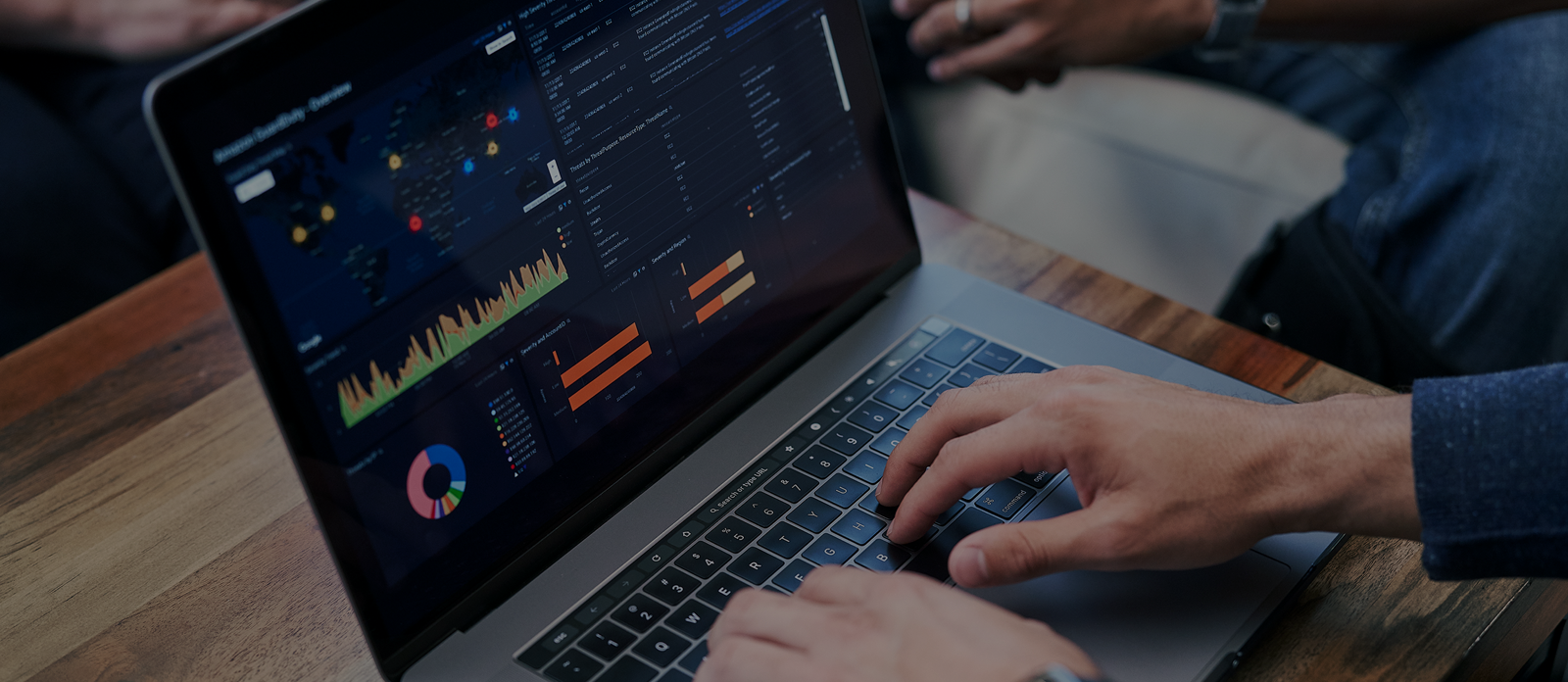
 ANZ Virtual Cert Jams
ANZ Virtual Cert Jams
Wednesday, 16 February 2022
2/16/22: 10:00am - 5:00pm
Hello Mohammad,
Come join us for a fun-filled day of Certifications with your fellow colleagues in the ANZ region! We will feature the following certifications and topics:
- Cloud SIEM Fundamentals
- Cloud SIEM Administration
Register here
We look forward to seeing you!
Best,
Sumo Logic Learn Team
Sumo Logic, Level 9, 64 York Street, Sydney, NSW 2000
© 2022 Sumo Logic, All rights reserved.Unsubscribe 


by "Sumo Logic Learn Team" <training@sumologic.com> - 06:00 - 13 Feb 2022 -
A belated welcome to McKinsey.com, MD Abul
McKinsey&Company
Get started with our most popular content .
We recently noticed that you and a small number of other registered readers never received an email properly welcoming you to McKinsey.com, and we’re so sorry for the oversight. It’s no reflection on how glad we are to have you as a reader. We hope you’ll forgive our tardiness and take a moment to start exploring the site, beginning with a few of our most popular articles, theme pages, and newsletters.
Warmly,
McKinsey Global PublishingMost popular articles 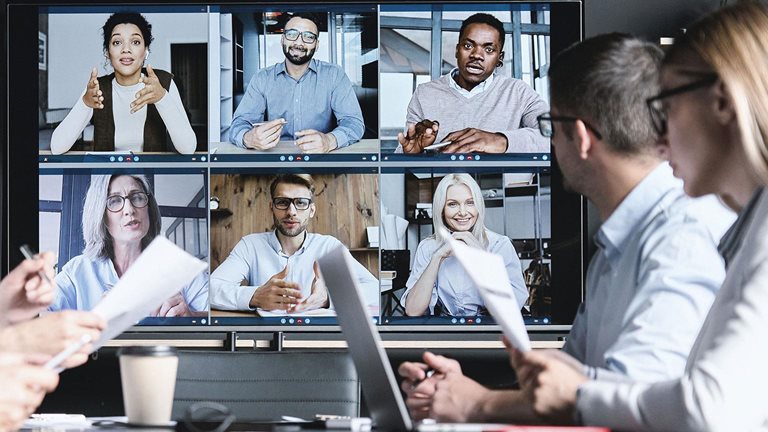
If we’re all so busy why isn’t anything getting done? With endless meetings, incessant emails, and casts of thousands, companies have mastered the art of unnecessary interactions. Winning in the next normal requires much more focus on true collaboration. Collaborate and innovate 

A military veteran knows why your employees are leaving She also knows what you can—and can’t—do about it. Here are three surprising lessons from a veteran of the wars in Iraq and Afghanistan. Understand the Great Resignation 

The role of ESG and purpose Answering three questions about purpose and environmental, social, and governance issues can help business leaders zero in on what matters most for their organizations. Pursue purpose Most popular themes 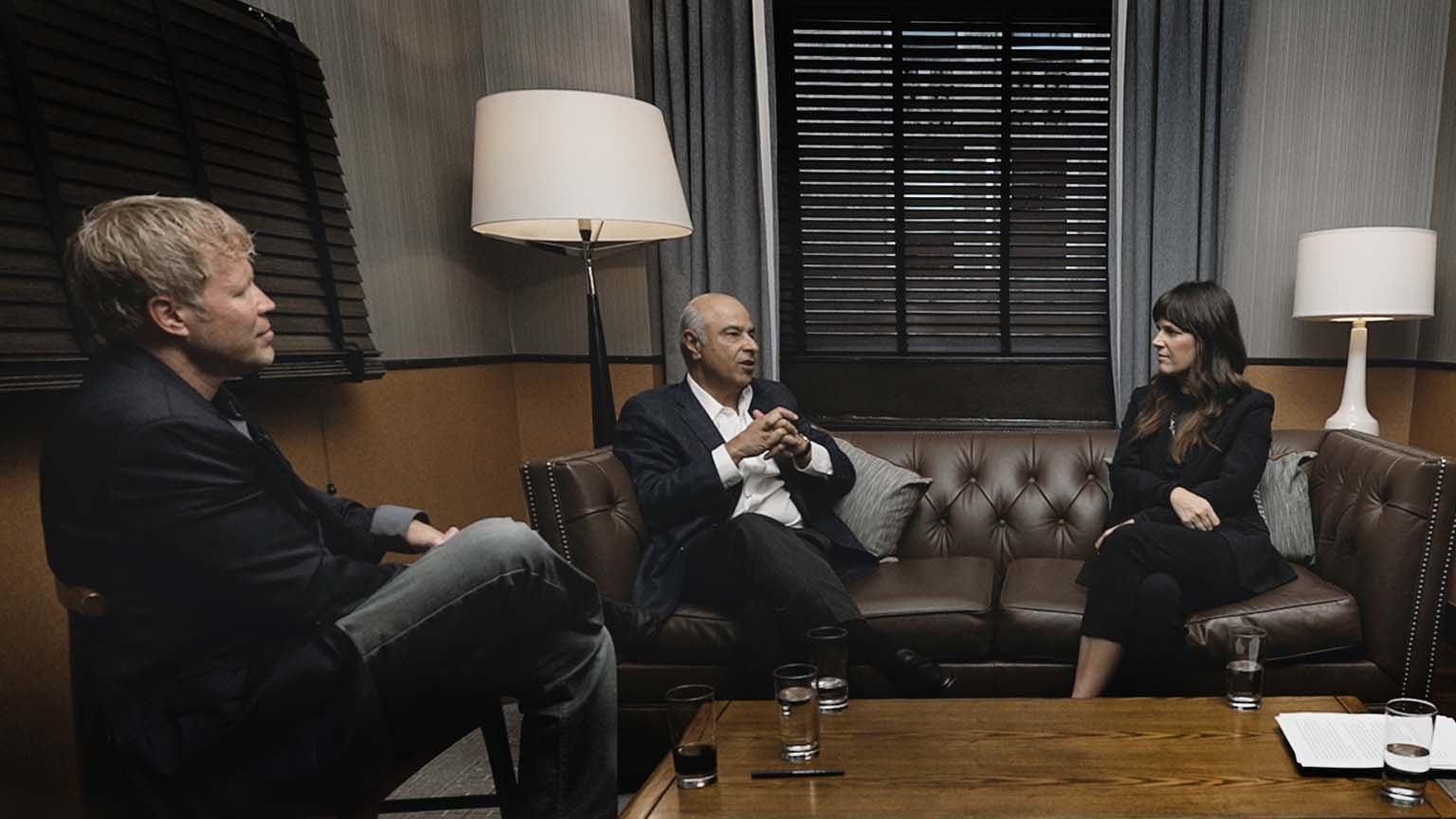
The six mindsets of excellent CEOs: Part 1 

Quitting time? Not so fast: here’s what’s driving the Great Resignation and what to do about it 

How to think like a kid Most popular newsletters 
Employees are exhausted—and exiting. Offering excellent employee experience is all the more crucial. 

The resilient organization: A leader’s guide 

How to get a grip on unnecessary interactions at work Sample and sign up for our 40+ newsletters and topical alerts at mckinsey.com/subscriptions. 

Follow our thinking 


McKinsey Insights - Get our latest
thinking on your iPhone, iPad, or Android

This email contains information about McKinsey’s research, insights, services, or events. By opening our emails or clicking on links, you agree to our use of cookies and web tracking technology. For more information on how we use and protect your information, please review our privacy policy. You received this email because you are a registered member of mckinsey.com. Manage subscriptions | Unsubscribe Copyright © 2022 | McKinsey & Company, 3 World Trade Center, 175 Greenwich Street, New York, NY 10007
by "McKinsey & Company" <publishing@email.mckinsey.com> - 01:26 - 13 Feb 2022 -
The week in charts
the Daily read
Consumer inflation, green shipping, aesthetic treatments, and more .
Share this email 



ALL THE WEEK’S DATA THAT'S FIT TO VISUALIZE 
Our Charting the path to the next normal series offers a daily chart that helps explain a changing world—during the pandemic and beyond. In case you missed them, this week’s graphics explored the increase of investments in space by private companies, the reluctance of Gen Z seeking mental-health treatments, the cost of green shipping, and how the popularity of aesthetic treatments vary by region. FEATURED CHART Running hot 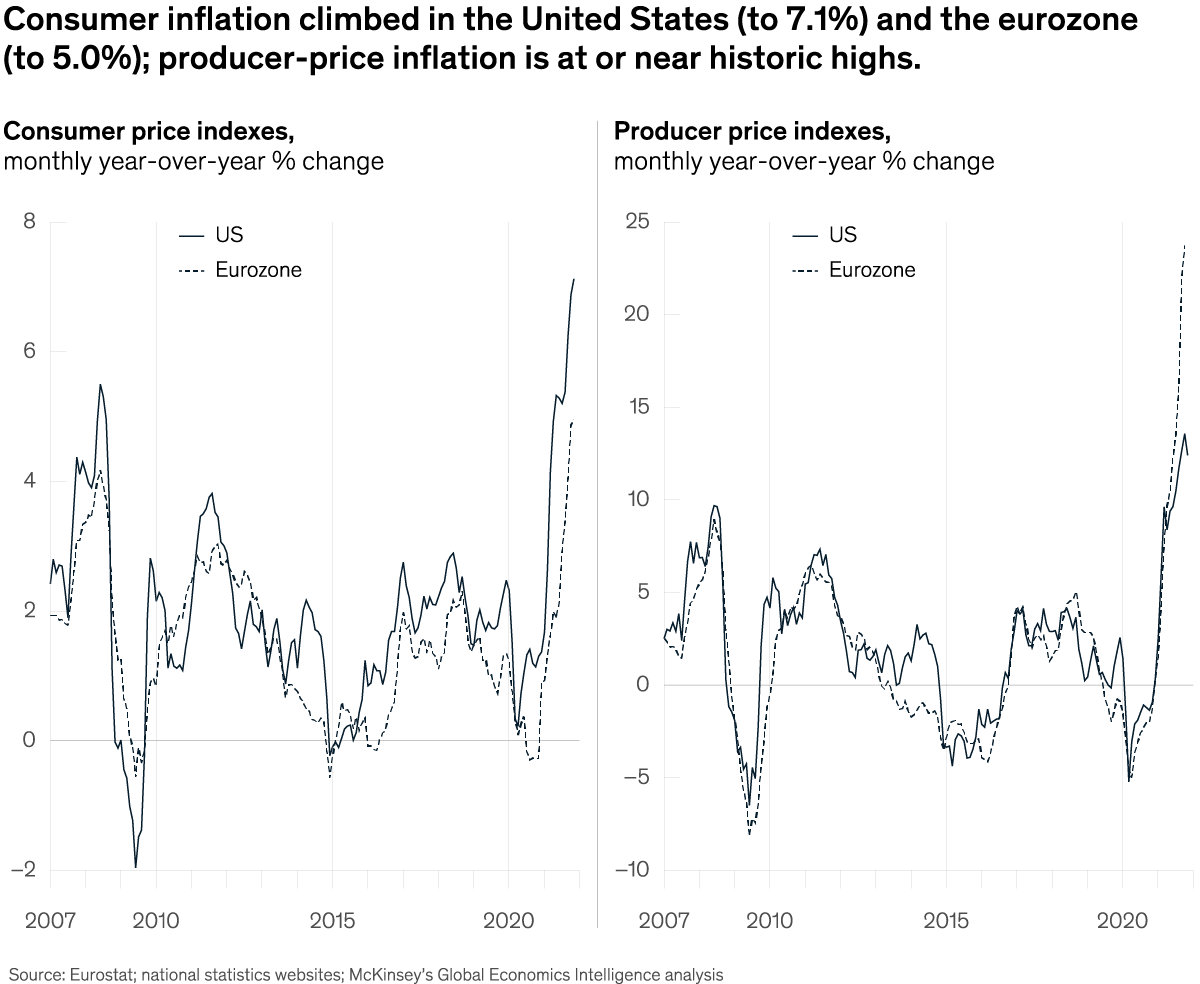
See more 



This week’s other select charts Private players stake their place in space Gen Z reluctant to seek behavioral-health help Green shipping won't be cheap Smooth operator 

Follow our thinking 



Share these insights Did you enjoy this newsletter? Forward it to colleagues and friends so they can subscribe too.
Was this issue forwarded to you? Sign up for it and sample our 40+ other free email subscriptions here.This email contains information about McKinsey’s research, insights, services, or events. By opening our emails or clicking on links, you agree to our use of cookies and web tracking technology. For more information on how we use and protect your information, please review our privacy policy. You received this email because you subscribed to The Week in Charts newsletter. Manage subscriptions | Unsubscribe Copyright © 2022 | McKinsey & Company, 3 World Trade Center, 175 Greenwich Street, New York, NY 10007
by "McKinsey Week in Charts" <publishing@email.mckinsey.com> - 03:29 - 12 Feb 2022 -
A futurist's view on synthetic biology
the Daily read
Understand tomorrow's technology .
Share this email 



AN ARTICLE A DAY, PICKED BY OUR EDITORS 
Have you ever wanted to reinvent yourself? If you’ve thought about change during the pandemic, you’re not alone, but futurist Amy Webb is looking at the idea of transformation on a molecular level. Her new book, The Genesis Machine: Our Quest to Rewrite Life in the Age of Synthetic Biology, examines cellular engineering and the possibilities of a world where “it’s possible to reprogram the fundamental units of life.” From canceling aging to living underground, synthetic biology provides methods for reinvention that are a bit more advanced than a new pandemic haircut. Check out the latest interview from our Author Talks series to understand the potential of synthetic biology—and how it could help us create better futures. — Babi Oloko, digital editor, New York 
Author Talks: Hacking into humanity In the next decade, Amy Webb predicts that synthetic biology will be as common as artificial intelligence. Understand tomorrow's technology 

Quote of the Day “To this day, that’s something I take with me to all my senior executive meetings. I take time to think, ‘What’s the conversation we really want to have, how can we go off script and have a high-impact conversation?’ And that’s really served me well as we seek to impact our clients and impact the world.” —Senior partner Drew Ungerman on the value of going off script when he led a senior client meeting, in the latest episode of My Rookie Moment 
Chart of the Day See today’s chart 
Also New 

COVID-19: Implications for business Our latest perspectives on the coronavirus outbreak, the twin threats to lives and livelihoods, and how organizations can prepare for the next normal. Get updated 


Global Economics Intelligence executive summary, January 2022 Industry and trade in goods grow on strong consumer demand; the pandemic wave, inflation, and geopolitical tensions present risks to faster growth in 2022. Get updated 


The McKinsey Crossword: Author Talks | No. 62 Sharpen your problem-solving skills the McKinsey way, with our weekly crossword. Each puzzle is created with the McKinsey audience in mind, and includes a subtle (and sometimes not-so-subtle) business theme for you to find. Answers that are directionally correct may not cut it if you’re looking for a quick win. Play now 


Follow our thinking 



Share these insights Did you enjoy this newsletter? Forward it to colleagues and friends so they can subscribe too.
Was this issue forwarded to you? Sign up for it and sample our 40+ other free email subscriptions here.This email contains information about McKinsey’s research, insights, services, or events. By opening our emails or clicking on links, you agree to our use of cookies and web tracking technology. For more information on how we use and protect your information, please review our privacy policy. You received this email because you subscribed to the Daily Read newsletter. Manage subscriptions | Unsubscribe Copyright © 2022 | McKinsey & Company, 3 World Trade Center, 175 Greenwich Street, New York, NY 10007
by "McKinsey Daily Read" <publishing@email.mckinsey.com> - 06:31 - 11 Feb 2022 -
How Goldilocks might approach the bear of transformation
The Shortlist
Getting the numbers just right .
Share this email 



Our best ideas, quick and curated | FEBRUARY 11, 2022 View in browser 
This week, we look at how companies can avoid the common pitfalls that befall most transformations. Plus, potential solutions for the nursing crisis from a McKinsey senior partner—herself a registered nurse—and the trends shaping the sporting-goods industry in 2022. 
What makes a transformation successful? Often, companies apply the term “transformation” loosely to any form of change, however minor or routine. But McKinsey looks at transformation in a more comprehensive way: as an intense, organization-wide program to enhance performance (an earnings improvement of 25 percent or more) that also boosts organizational health. When such transformations succeed, they radically improve important business drivers, such as topline growth, capital productivity, cost efficiency, operational effectiveness, customer satisfaction, and sales excellence. A longer-term horizon. After adapting to the COVID-19 pandemic and new ways of working, many employees may expect that change is the new constant. But because successful transformations instill the importance of rallying around a common vision and strategy, they change culture and mindsets in a way that allows companies to improve their results year after year. And they can energize a workforce if done correctly. The exception, not the rule. Still, the average success rate of a comprehensive transformation remains dramatically low. According to a recent McKinsey Global Survey, less than one-third of respondents—all of whom had been part of a transformation in the past five years—say their companies’ transformations have been successful at both improving organizational performance and sustaining those improvements over time. The difference between success and failure isn’t whether an organization follows a specific subset of actions but rather how many actions it takes, including adapting goals for employees at all levels. The 7 percent solution. In companies big and small, successful transformations ultimately affect every worker. Nevertheless, leaders sometimes hesitate to bring the whole group on board at the start of a transformation because doing so can use up too much energy, attention, and resources. At the same time, it’s a mistake to keep the core transformation team small. So what’s the minimum level of involvement? When looking at data from 60 organizations that are at least two years into their transformations, McKinsey discovered that transformations with at least 7 percent of employees owning part of the transformation are twice as likely as those with less than 7 percent initiative ownership to have TSR in excess of their representative sector and geographic stock indexes. Digital guardians. Digital transformations, too, require widespread involvement. They are business-model reinventions that require different functions across an organization to work together in new ways and can happen only through large-scale investments in building an entirely new set of capabilities. The role that can make that level of sustained change happen is the CEO. The most successful CEOs prioritize tech and data in two ways: they obsess about how to apply tech and data to solving business problems or finding new opportunities, and they make organizational changes to ensure that tech and data are embedded in the business. CEOs shouldn’t tolerate a structure where the business sets requirements on which IT must deliver. Rather, they should develop an operating model where technology and business teams collaborate on developing and delivering digital products and services. Show them the … financial incentives. While some employees may throw themselves into improvement programs for the challenge or love of the job, companies that use generous and specific financial incentives can significantly improve the odds of their transformations’ success while unleashing sustainable value. This article looks at seven principles that can help ensure that the programs achieve the desired outcomes. 
OFF THE CHARTS Coal prices and steelmaking’s future Demand for coking coal, an essential raw material in the production of steel, was extremely strong in 2021 as the wider global economy recovered from its sharp contraction at the height of the COVID-19 crisis—even as supply chain issues constricted availability. Safety challenges and flooding affected domestic mines in China; border closures between China and Mongolia, as well as strikes in the US, also curtailed trade. In addition, diplomatic tensions between Australia and China compounded the situation. That confluence of events created tightness in the market and contributed to surging prices for coking coal. McKinsey looks at this long-term trend that may mean that prices stay elevated. 
Check out our chart of the day here. 

PODCAST Who’s taking care of the nurses? A recent McKinsey survey found that more than 30 percent of nurses in the US are thinking of leaving direct patient care. The same is true in healthcare systems around the world. McKinsey recently spoke with Gretchen Berlin, a registered nurse and McKinsey senior partner, on the state of nursing and ways to improve the work experience of nurses, practically and emotionally. “A lot of it comes down to the support and recognition that [nurses] feel in their workplace from their leaders, their managers, their team, and through ensuring there’s sufficient staffing, sufficient respite, and gratitude,” Berlin says. 
MORE ON MCKINSEY.COM Sporting goods 2022: The new normal is here | The sporting-goods industry continues to evolve amid increased health awareness, shifting channel preferences, and rising sustainability concerns. Sporting-goods players will need to adapt to five trends shaping the industry in 2022. CIO perspectives on leading agile change | In a panel discussion, chief information officers from the banking and telecom industries come together to talk about challenges and lessons learned from leading agile transformations. Building the cloud talent you need | Despite the fact that there is more than $1 trillion of new value at stake in the cloud, organizations are struggling to capture those benefits because they don’t have the right talent in place. Here are six practical ways to build capabilities. 


THREE QUESTIONS FOR Kate Van Akin Kate Van Akin, a senior expert based in McKinsey’s London office, works with leaders on engaging employees in organizational change. She recently began posting her favorite poetry on LinkedIn in a series she calls Friday Pause. What inspired you to launch Friday Pause? I was taking a walk in Richmond Park on a Friday morning in August when I heard a poem called “Fast forward” on one of my favorite podcasts, Turning Towards Life. The poem, by Debbie Danon, is about how we try to avoid uncomfortable feelings through distractions. One part really hits home: And then there are moments,
Quiet still moments
Before my itchy finger can hit the button.
I realize that fast forward isn’t doing what it promised.I am acutely aware of how true this is for pretty much everyone in the world today—how much we multitask in the name of productivity, suppress our feelings rather than listen to what they are trying to tell us, and therefore fail to be fully present for ourselves and others and how all these coping tactics aren’t doing what they promised. Those feelings and nagging doubts don’t go away; online shopping doesn’t buy happiness and a sense of inner peace. I imagine this lack of presence causes some amount of pain for people, though many might not be aware of it, and I wanted to offer a small moment of pause through poetry. As soon as I got home, I sat down at my computer and wrote my first post on LinkedIn. I figured I’d iterate and fail fast. After all, isn’t that the whole spirit of the agile approach to work we write about so often? Why poetry? For those of us used to fast-forwarding through life, I believe poetry can be a simple yet powerful way to begin reconnecting with ourselves. There is so much content being published these days—news and business articles, self-help books, even well-intentioned spiritual books—designed to help us see life in new ways. When I read this content, I sometimes find it difficult to concentrate. The writing styles all blend together, my mind wanders off on tangents, and I need to highlight or take notes just to pull out the main ideas. Otherwise, I forget most of what I’ve read, and there’s no lasting effect on me. By contrast, a good poem cuts through all the mental noise and touches my heart. My attention zeroes in on the words, my breathing slows, and everything around me fades into the background. After I read a good poem, I want to sit with the feelings it has stirred up—whether joy, contentment, longing, sadness, or any other of a number of feelings—and just indulge in that feeling of presence. What are your sources of inspiration? As you can imagine, ever since I started Friday Pause, I’ve been reading a lot more poetry! Poetry is a very personal choice, with many different styles. I like to go to a bookstore every few weeks and browse poetry anthologies until I find one that has me lingering over the pages and then buy that one. The Poetry Pharmacy: Tried-and-True Prescriptions for the Heart, Mind and Soul, by William Sieghart, is a fantastic starter collection for newcomers to poetry—there are two volumes. I also listen to the aforementioned podcast Turning Towards Life, where the hosts share a poem and discuss it for about half an hour, every week. And finally, the book I cannot live without is Change Your Thoughts—Change Your Life: Living the Wisdom of the Tao by Wayne W. Dyer. It offers the 81 verses of Tao Te Ching, each accompanied by a short essay about the verse. Becoming immersed in Taoism through these brief morning readings over the past five years has slowly changed my outlook on and approach to life in a way that I now feel more grounded, centered, and able to meet whatever each day brings me with ease. — Edited by Barbara Tierney Share this Q&A 



BACKTALK Have feedback or other ideas? We’d love to hear from you. 
Tell us what you think 

Follow our thinking 



Share these insights Did you enjoy this newsletter? Forward it to colleagues and friends so they can subscribe too.
Was this issue forwarded to you? Sign up for it and sample our 40+ other free email subscriptions here.This email contains information about McKinsey’s research, insights, services, or events. By opening our emails or clicking on links, you agree to our use of cookies and web tracking technology. For more information on how we use and protect your information, please review our privacy policy. You received this email because you subscribed to The Shortlist newsletter. Manage subscriptions | Unsubscribe Copyright © 2022 | McKinsey & Company, 3 World Trade Center, 175 Greenwich Street, New York, NY 10007
by "McKinsey Shortlist" <publishing@email.mckinsey.com> - 02:37 - 11 Feb 2022 -
When work is remote, words build the bridges between us
McKinsey&Company
There ought to be a word for that .

Whatchamacallit The news • Is this thing on? A recent “hot mic” incident involving President Biden and his choice words for a certain journalist got lots of press. A less-explored angle is the origin of the term “hot mic.” One part of its lore: electrical current used to make objects like microphones hot to the touch. [WSJ] • The pen is mightier. It may be counterintuitive in a time of constant Slacking, Zooming, and WhatsApping—but the pandemic could be ushering in a golden age of business writing. Remote workforces require talented scribes to keep dispersed teams in the loop and to help new employees understand company culture. Clear, thorough documentation benefits all levels of the organization. [Economist] 
“The natural order of things is that we define words. We imbue them with meaning. We pour ourselves into them. . . . Ultimately, all words are made up.” 
Our insights • A fresh vocabulary. The Dictionary of Obscure Sorrows is a nearly 300-page book of definitions for words that didn’t exist before author John Koenig invented them. Koenig, a videomaker and graphic designer, says many of the made-up words in his book refer to commonly experienced emotions or sensations for which an English term was previously lacking. One example: tichloch—inspired by the hungry crocodile in Peter Pan—“which is the feeling that you don’t know how much time you have left on this earth,” Koenig says. • This book is whimsdee. Both whimsical and deep, Koenig’s project suggests that we are the masters of language, free to forge it and direct it to do our bidding, rather than its servants, merely using words as ready-made tools. If you feel at all hem-jawed (“trapped inside your own language”), this book may be just the ticket to a more nyctous (“quietly overjoyed”) outlook. — Edited by Katy McLaughlin Learn some new words 
Was this forwarded to you? Sign up here. Or send us feedback — we’d love to hear from you. 

Follow our thinking 


This email contains information about McKinsey’s research, insights, services, or events. By opening our emails or clicking on links, you agree to our use of cookies and web tracking technology. For more information on how we use and protect your information, please review our privacy policy. You received this email because you subscribed to the On Point newsletter. Manage subscriptions | Unsubscribe Copyright © 2022 | McKinsey & Company, 3 World Trade Center, 175 Greenwich Street, New York, NY 10007
by "McKinsey On Point" <publishing@email.mckinsey.com> - 12:41 - 11 Feb 2022 -
You’re Invited to Sumo Logic’s [Virtual] ANZ Cert Jams!
Sumo Logic
You're invited


 ANZ Virtual Cert Jams
ANZ Virtual Cert Jams
Wednesday, 16 February 2022
2/16/22: 10:00am - 5:00pm
Hello Mohammad,
We are excited to invite you to Sumo Logic’s [Virtual] ANZ Cert Jams taking place on 16 February, 2022. Get certified in Cloud SIEM Fundamentals and Cloud SIEM Administration.
The event is complimentary; all we ask is your engagement and willingness to learn. For every certification you achieved, we will reward you with a $15 UberEats voucher.
Register here
We look forward to seeing you!
Best,
Sumo Logic Learn Team
Sumo Logic, Level 9, 64 York Street, Sydney, NSW 2000
© 2022 Sumo Logic, All rights reserved.Unsubscribe 


by "Sumo Logic Learn Team" <training@sumologic.com> - 06:00 - 10 Feb 2022 -
Design for sustainability: What you need to know
the Daily read
Build a better planet .
Share this email 



AN ARTICLE A DAY, PICKED BY OUR EDITORS 
The "great cleanup" is underway across industries, and the quest for a sustainable future requires actions on many fronts. One opportunity that's rising? Transforming product design and R&D functions to support the net-zero transition. While R&D accounts for 5 percent (or less) of the total cost of a product, it influences up to 80 percent of that product's resource footprint. A new article lays out what you need to know about product development, R&D, and design for sustainability—check it out. — Torea Frey, managing editor, Seattle 
Product sustainability: Back to the drawing board Up to four-fifths of a product’s lifetime emissions are determined by decisions made at the design stage. By building on proven cost-optimization techniques, companies can get those choices right. Design for sustainability 

Quote of the Day “Two-thirds of corporate customers intentionally reach for digital or remote in-person engagement when given a choice. Moreover, they’re doing so at every stage of the purchasing journey. In all, e-commerce has surpassed in-person as the single most effective channel.” —Find out why that matters in “Busting the five biggest B2B e-commerce myths” 
Chart of the Day See today’s chart 
Also New 

Changing project delivery to meet net-zero targets As construction increasingly adopts climate targets, owners and contractors can help change how projects are delivered. Doing so will likely require expert analytical and technical skills. Take a collective approach 


‘Measure and improve; measure and improve’: An interview with Public’s CTO Andy Richardson, Public’s chief technology officer, discusses why digitization is so difficult for governments—and why the potential for impact is so immense. Leverage technology's potential 


Building a better planet with satellite data Spire CEO Peter Platzer says the answers to some of Earth’s biggest problems can be found in space. Look to the future 


Follow our thinking 



Share these insights Did you enjoy this newsletter? Forward it to colleagues and friends so they can subscribe too.
Was this issue forwarded to you? Sign up for it and sample our 40+ other free email subscriptions here.This email contains information about McKinsey’s research, insights, services, or events. By opening our emails or clicking on links, you agree to our use of cookies and web tracking technology. For more information on how we use and protect your information, please review our privacy policy. You received this email because you subscribed to the Daily Read newsletter. Manage subscriptions | Unsubscribe Copyright © 2022 | McKinsey & Company, 3 World Trade Center, 175 Greenwich Street, New York, NY 10007
by "McKinsey Daily Read" <publishing@email.mckinsey.com> - 05:05 - 10 Feb 2022 -
Does your company's dress code deter Black applicants?
Intersection Subject Line
Is your hair allowed at work? .
Share this email 



DELIVERING ON DIVERSITY, GENDER EQUALITY, AND INCLUSION 
In this issue, we look at hair discrimination in workplace dress codes and at how nurses are faring at this point in the pandemic. THE STAT 30% That’s roughly the share of Black Americans surveyed by McKinsey who said that their company rarely, or only sometimes, allows employees to express themselves in personally meaningful ways—through their clothing, hairstyles, jewelry, and makeup, for example. By contrast, just one in five of their White counterparts said that employees could not often express themselves in these ways. The McKinsey survey included nearly 25,000 employees from a dozen companies, including some of the largest private-sector employers in the US; industries ranged from tech and telecoms to retail and consumer packaged goods. Black and White employees at these companies had strikingly different views and experiences when it came to company support for self-expression. Meanwhile, academic studies on this issue offer a clear picture of racial bias and discrimination. One peer-reviewed paper from 2020 shows that Black women with natural hairstyles face significant bias in job recruitment: across multiple studies, they were perceived to be less professional and less competent than Black women with straightened hairstyles and White women with straight or curly hairstyles—and they were less likely to be recommended for job interviews. Dr. Ashleigh Shelby Rosette, coauthor of the paper and senior associate dean at Duke University’s Fuqua School of Business, sums up the situation: “This bias exists and this is not trivial.” In many states, this is also not legal. To date, 14 US states have banned race-based hair discrimination, including discrimination targeting braids, twists, and locks, in addition to afros. They have done that by passing legislation such as the CROWN Act. The words behind the acronym: “Creating a Respectful and Open World for Natural Hair.” As Dr. Rosette points out, people of all genders can experience hair discrimination—and it takes place in countries around the world. 
THE TAKEAWAY 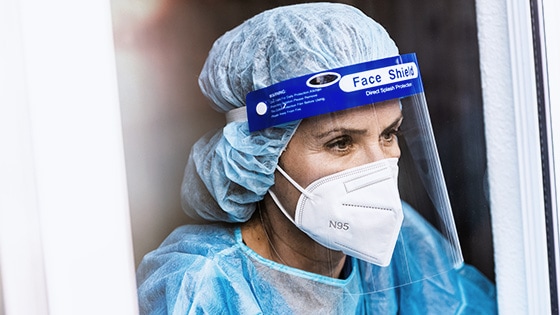
One in three registered nurses in the US may leave their current direct-patient-care role in the next year. That’s according to a McKinsey survey of more than 700 frontline nurses across the country, conducted in late November 2021. Remarkably, many of those thinking of leaving their position say that they may leave direct patient care altogether. Among the reasons to consider leaving, respondents cited chronic staffing shortages, an unsustainable workload, the emotional toll of their job, and the fact that the pandemic is wearing on—and that relief is not yet in sight. In a recent episode of The McKinsey Podcast, Gretchen Berlin, a registered nurse and McKinsey senior partner, discusses the circumstances that nurses are facing and how employers can improve their work experience. Among the top ways that nurses in the US say that their employers can support their well-being: provide more breaks, including breaks during shifts, paid time off, and opportunities for rotations. And to learn more about what nurses need? A leader can spend more time with nurses during their shifts. — Edited by Julia Arnous, an editor in McKinsey’s Boston office 

Follow our thinking 



Share these insights Did you enjoy this newsletter? Forward it to colleagues and friends so they can subscribe too.
Was this issue forwarded to you? Sign up for it and sample our 40+ other free email subscriptions here.This email contains information about McKinsey’s research, insights, services, or events. By opening our emails or clicking on links, you agree to our use of cookies and web tracking technology. For more information on how we use and protect your information, please review our privacy policy. You received this email because you subscribed to the Intersection newsletter. Manage subscriptions | Unsubscribe Copyright © 2022 | McKinsey & Company, 3 World Trade Center, 175 Greenwich Street, New York, NY 10007
by "McKinsey Intersection" <publishing@email.mckinsey.com> - 02:44 - 10 Feb 2022 -
An evangelical Christian and a climate scientist walk into a bar. Actually, no joke: They’re one and the same.
McKinsey&Company
Faith and science .

Talking about climate change The news • Emotions run deep. People are divided on climate change because “emotions are engaged deeply,” says climate scientist—and evangelical Christian—Katharine Hayhoe, who is known for bridging ideological divides. “People on the right, for example, deeply fear losing their liberties because of climate solutions.” For others already acting on climate change, despair can settle in when they realize that the problem is too big for any individual to fix. That’s why we should consider how we influence those around us, Hayhoe explains. Your decision to eat a plant-based burger, for instance, might make your friends want to try one, too. [NYT] • A disaster-stricken US. In 2021, extreme weather linked to climate change struck more than 800 US counties, reaching 40% of the country’s population, a new study shows. Global warming “has loaded the weather dice against us,” observes Hayhoe, one of the climate scientists quoted in this article. Last year alone, heat waves affected at least 80% of Americans. Flash floods, hurricanes, wildfires, and other natural disasters killed 656 people and caused more than $100 billion in damages. [WaPo] 
“Fifty percent of us feel hopeless and helpless [about] climate change. That’s why it’s so important to tell people that every single one of us has a role to play in fixing this.” 
Our insights • Connecting the dots. One of the biggest reasons people don’t act on climate change is “psychological distance,” says Hayhoe, who serves as chief scientist of the Nature Conservancy and whose latest book is Saving Us: A Climate Scientist’s Case for Hope and Healing in a Divided World. “Even those of us who are concerned about it still think it’s an issue for the future, for people far away, or for people … who hug trees,” Hayhoe adds. But if we connect the dots between what people already care about and how climate change affects them, we can reach “a surprising agreement” about how to work together, she contends. • Getting past fear. Many of us are paralyzed by fear or think we’re too insignificant to truly make a difference about the changing climate, Hayhoe says. But, as with the civil-rights movement or women getting the vote, the world changed radically when “ordinary, relatively insignificant people … used their voices to call for that better world, to advocate for change.” For a lively discussion on science, faith, and human psychology—and on how small conversations can have astonishing results—read the full interview. — Edited by Belinda Yu Get her take 
Was this forwarded to you? Sign up here. Or send us feedback — we’d love to hear from you. 

Follow our thinking 


This email contains information about McKinsey’s research, insights, services, or events. By opening our emails or clicking on links, you agree to our use of cookies and web tracking technology. For more information on how we use and protect your information, please review our privacy policy. You received this email because you subscribed to the On Point newsletter. Manage subscriptions | Unsubscribe Copyright © 2022 | McKinsey & Company, 3 World Trade Center, 175 Greenwich Street, New York, NY 10007
by "McKinsey On Point" <publishing@email.mckinsey.com> - 12:11 - 10 Feb 2022 -
Meeting the needs of the inclusive consumer
the Daily read
Shop with conscience .
Share this email 



AN ARTICLE A DAY, PICKED BY OUR EDITORS 
Do your social values shape your purchase decisions? Do you believe retailers should actively support Black-owned businesses and brands? If you answered yes to both questions, you are one of the estimated 100 million American shoppers who represent the inclusive consumer. And as a member of this large and influential group, you hold unique power to shape the retail narrative. Don't miss this new article, which lays out what retailers and brands need to do to keep your business and stay relevant. — Joyce Yoo, digital editor, New York The rise of the inclusive consumer Social values are shaping purchase decisions more than ever—and retailers that act now stand to attract consumers’ loyalty and spending. Support diverse entrepreneurs 

Quote of the Day “It has been an intense period full of unknowns. It’s hard to be self-aware enough to see the full impact of all these changes. I redeployed five times, and I got better at reintegrating each time. I had the benefit of practice, which allowed me to acknowledge what I was feeling, understand it better, and move forward.” —Adria Horn, military veteran and executive vice president of workforce at Tilson Technology Management, in a conversation with senior partner Aaron De Smet on the causes of the Great Resignation and how leaders might respond 
Chart of the Day See today's chart 
Also New 
Transforming capital projects to deliver net-zero emissions Net-zero capital expenditures will greatly exceed the current capacity of the projects sector. Collaborative transformation can help players deliver the net-zero project portfolio. Collaborate for net-zero 

Winning the war for talent in product development Skills shortages and a labor mismatch are challenging product-development teams. The solution could lie within the existing workforce. Fill skills gaps 

Author Talks: Building consumer trust with Google’s Neil Hoyne Without effective leadership and a clear strategy, software can only solve so much. Use data strategically 


Follow our thinking 



Share these insights Did you enjoy this newsletter? Forward it to colleagues and friends so they can subscribe too.
Was this issue forwarded to you? Sign up for it and sample our 40+ other free email subscriptions here.This email contains information about McKinsey’s research, insights, services, or events. By opening our emails or clicking on links, you agree to our use of cookies and web tracking technology. For more information on how we use and protect your information, please review our privacy policy. You received this email because you subscribed to the Daily Read newsletter. Manage subscriptions | Unsubscribe Copyright © 2022 | McKinsey & Company, 3 World Trade Center, 175 Greenwich Street, New York, NY 10007
by "McKinsey Daily Read" <publishing@email.mckinsey.com> - 06:07 - 9 Feb 2022 -
How COVID-19 changed the rules of ecosystems
Re:think
Ecosystems challenge everything Nine of the ten most valuable companies on earth are ecosystem companies. These are companies like Alphabet and Apple, which cut across industries and create value through a complex network of interconnected businesses. Ecosystems are a fundamental change in how value is created—so very different from the world where all companies operated in well-defined industries. And this shift to ecosystems is only going to accelerate. By 2030, ecosystems will play a major role in almost every aspect of global economy, driving around $80 trillion in annual revenue—a third of total global revenue.
COVID-19 accelerated this trend. That’s because the fundamentals of ecosystems are so customer friendly. They provide a single door into a world of services, kind of the way a smartphone is a simple device with lots of complexity behind it. Technology has made this possible. Ecosystems feature interconnected sets of services that allow users to address a variety of cross-sectoral needs in one integrated experience. Thanks to digital technologies, companies don’t have to content themselves with offerings limited by their industry’s traditional borders. Instead, they can try to serve customers along their entire journey, often by partnering with other companies in the ecosystem.
During the pandemic, this suited customers who preferred ordering things digitally to shopping at physical locations, especially older generations. They jumped online like never before. So, industries where older people traditionally drive a bigger part of the value, like wealth management or home care, had to leapfrog to digital ecosystems.
And guess what? It turns out that some incumbent companies, including telcos and banks, proved to be pretty good at shifting their business models and embracing ecosystems. They figured out how to apply their real strengths in an ecosystem economy. The pandemic didn’t just prompt the feeling of, “Oh, boy, we have to do this.” It also brought the feeling that, “We can do it.”
I don’t think every company must become an ecosystem platform. But every board, whether their companies are B2B or B2C, needs to understand how ecosystems are reshaping their current sector. Often, boards are good at tracking sparkly new technologies, like blockchain, IoT, and the metaverse. But they need to look below these enabling technologies and see that they are likely no longer competing within their industry for market share but in a broader, multitrillion-dollar ecosystem for customer ownership. That means different KPIs, different competitors. Competitors from the past can be your collaborators. Collaborators from the past can be your competitors.
The way the rules have changed is earth-shattering. It’s one thing to say in basketball, “Hey, we are changing the rules. From now on, there are no three-pointers.” That’s just a technology change. Shifting to an ecosystem is like saying, “Actually, we’re not going to use a basket anymore. It’s going to be a goal. There will be four teams, not two, and by the way, you can use your legs. The winner won’t be the team that gets the most points but the team that blocks more shots. The opponents will change every quarter. And by the way, the whole thing is now happening in VR!”
in annual revenue will be generated by ecosystems by 2030
That’s the scale of the change. And that means companies must rethink the very concept of strategy. They must move from strategy in certainty to strategy under constant uncertainty, which is a huge challenge. They need to be far more entrepreneurial. They need to accept far more failures. They need to fail fast and then try again. They need to run multiple parallel value propositions and ideas and assume that not all of them will work out. They must take more of a portfolio-management approach to strategy. Participating in ecosystems can also change the very management structure and decision-making process of companies.
These are hard things to do. But this is business the way customers want it. Ecosystems are here to stay, and while the biggest winners are customers, there is huge upside for companies. You can reach a lot more customers a lot faster. Acquiring customers is cheaper than ever. And if you do it right, and figure out the rules sooner than later, you can be the gateway to serve more customers more successfully than you ever have. It can create stock market recognition which in turn can further accelerate change. It could be the biggest business opportunity of our lifetime.
ABOUT THE AUTHOR
Miklós Dietz is a senior partner in McKinsey’s Vancouver office.
MORE FROM THIS AUTHOR
Ecosystem 2.0: Climbing to the next level
After a first wave of trials, incumbents are shaking up value chains to attract new ecosystem customers—and tap potentially huge pools of value.
How do companies create value from digital ecosystems?
Ecosystem strategies can generate significant value both by growing the core business and by expanding the portfolio into new products and services.
This email contains information about McKinsey’s research, insights, services, or events. By opening our emails or clicking on links, you agree to our use of cookies and web tracking technology. For more information on how we use and protect your information, please review our privacy policy.
You received this email because you subscribed to our McKinsey Quarterly alert list.
Copyright © 2022 | McKinsey & Company, 3 World Trade Center, 175 Greenwich Street, New York, NY 10007
by "McKinsey Quarterly" <publishing@email.mckinsey.com> - 05:22 - 9 Feb 2022
